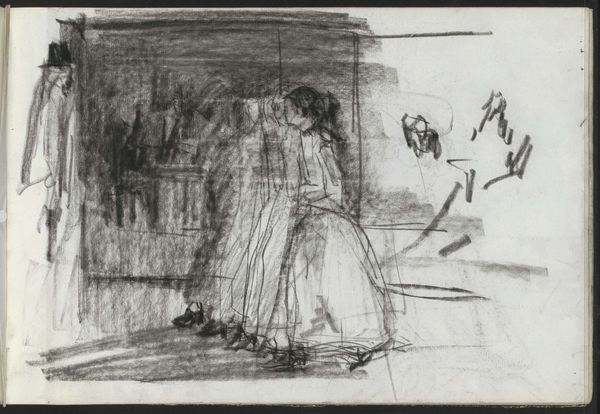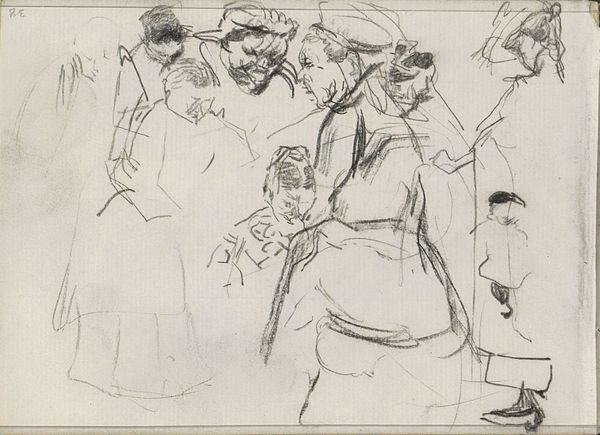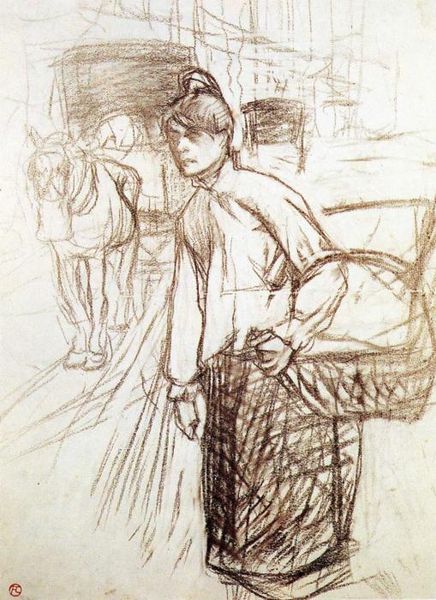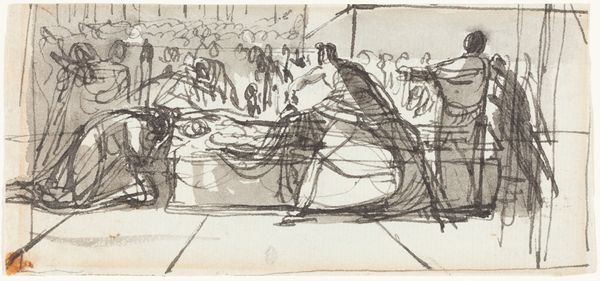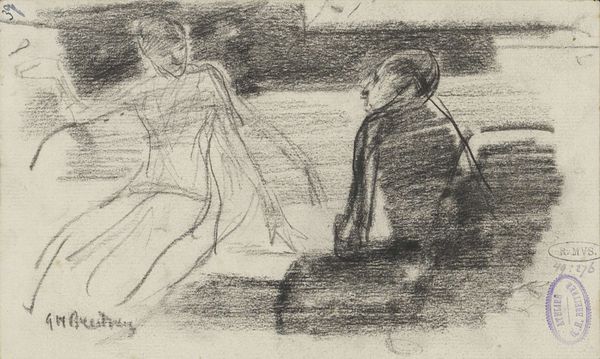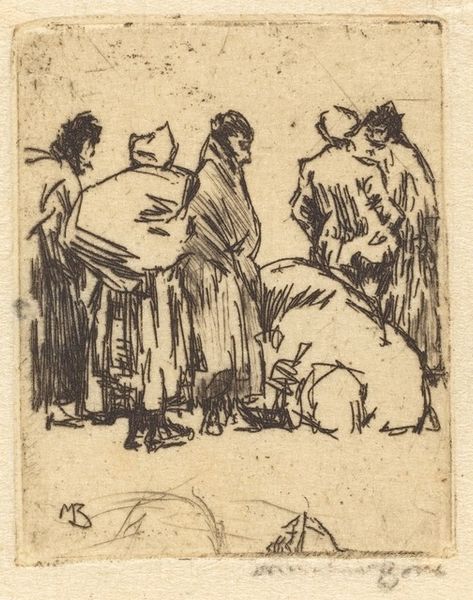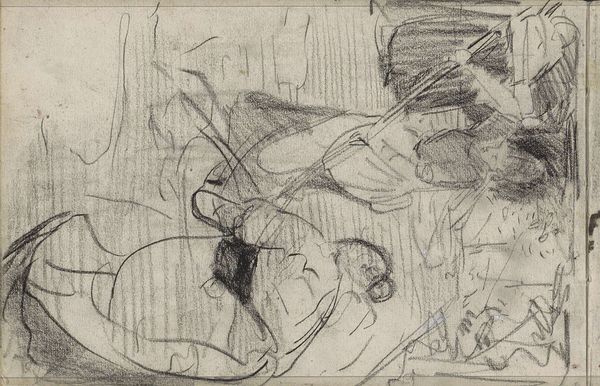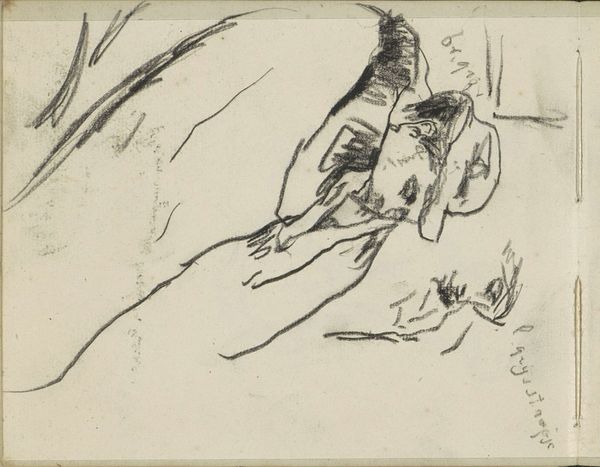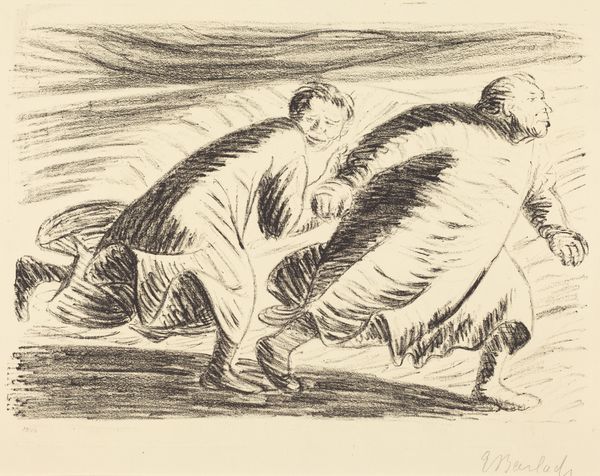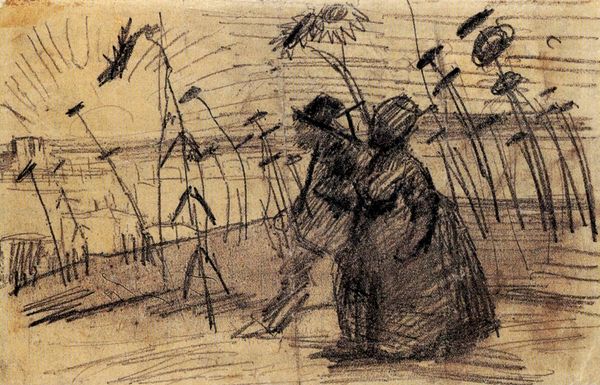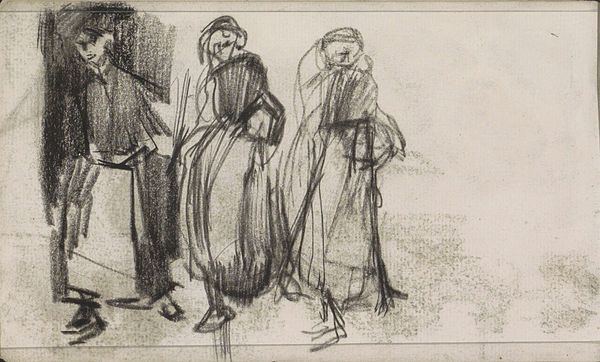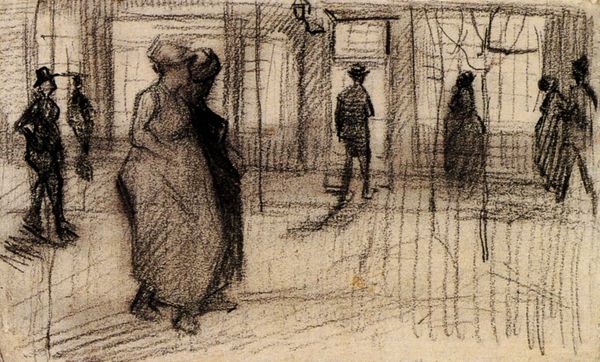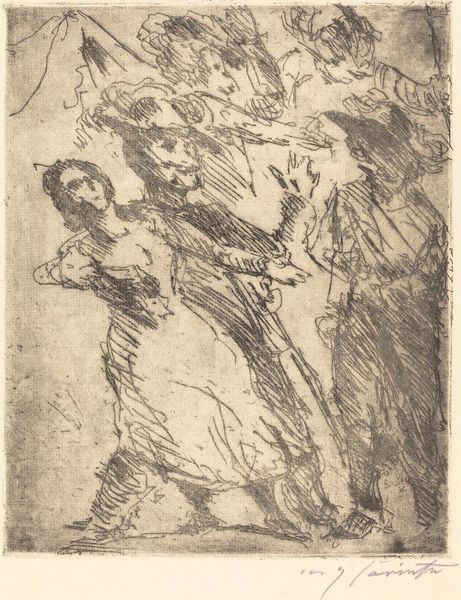
Copyright: Public domain
Editor: So here we have "Couple Dancing," a drawing by Vincent van Gogh from 1885, using pencil and pastel on paper. It has a blurry, dreamlike quality, almost like a memory. What do you see in this piece? Curator: I see a poignant commentary on class and labor in 19th-century Europe. The blurred figures could represent the working class, finding fleeting moments of joy amidst hardship. What does it mean to find intimacy and connection when your body is a machine? Editor: I hadn’t thought about it in terms of class struggle! I was just focused on the romanticism of the couple embracing. Curator: And is this embrace between equals? Consider that van Gogh was deeply concerned with social justice, even working as a missionary among miners. Might this dance be about fleeting pleasures? Or a statement on social restrictions during that time? What can a dance communicate that other activities cannot? Editor: I suppose their movements could be seen as constrained, even within the embrace. And the other figures seem like onlookers or perhaps even judges of the couple. Curator: Exactly! Consider also how this scene connects to a wider theme of the era – think of other portrayals of leisure and labor, like those by Millet or Courbet. How does Van Gogh subvert or expand upon those artistic traditions with this depiction of ordinary figures? Editor: I am going to look more into art during Van Gogh’s life now, to see these topics present in similar paintings of the time. Curator: Precisely, this drawing prompts us to rethink conventional ideas around beauty and romance, focusing instead on class, representation, and lived experiences. Editor: This has helped me consider how identity can play such a strong role in the arts, so I’m eager to broaden my perspective from now on.
Comments
No comments
Be the first to comment and join the conversation on the ultimate creative platform.
